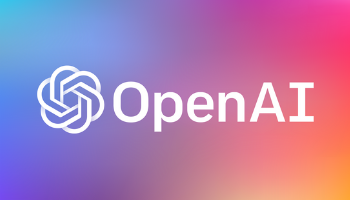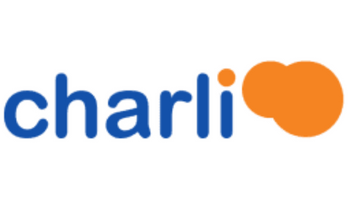Top Trends and Developments in Generative AI
02-Mar-2023

Introduction
Generative AI is one of the types of artificial intelligence (AI) capable of creating new content or information from scratch rather than just analyzing and processing existing data. The algorithms of generative AI work by learning patterns and structures in data, then using those patterns to generate new outputs that are similar in style or content.
For example, a generative AI model trained on images of dogs could create new images of dogs that look similar to those it was trained on, but are not identical copies. Generative AI can revolutionize businesses by enabling companies to create innovative ideas for products, services, and solutions more quickly and efficiently than ever before.
The Benefits of Generative AI for Businesses
Generative AI can empower businesses with the data-driven information essential for smart decision-making, lower the costs associated with development or marketing cycles, and identify alternative solutions to complex problems quickly. By utilizing generative AI and its predictive capabilities, businesses can harness the power of algorithms to make decisions faster and more accurately than before. By leveraging generative AI, businesses can explore new possibilities and experiment with different ideas in a fraction of the time.
Latest trends in Generative AI
GPT-3 and Transformer-based models: Generative Pre-trained Transformer 3 (GPT-3) and other transformer-based models are language models that use a neural network architecture called a Transformer. This architecture is pre-trained on a large amount of textual data. It can be fine-tuned for various natural language processing tasks, such as text classification, question answering, and language translation. It helps generate coherent and fluent text, which has led to their use in generative tasks such as text completion, text generation, and dialogue generation.
StyleGAN and other generative adversarial networks (GANs): GANs are generative models that have gained popularity recently for their ability to generate realistic images, videos, and even 3D models. StyleGAN is a particular type of GAN that allows for generating highly realistic images with fine-grained control over the style and features of generated images.
Neural architecture search (NAS): NAS is a technique used to design optimized neural network architectures for a specific task automatically. This technique has shown promising results in generative models, such as the generation of realistic images and videos.
Self-supervised learning: Self-supervised learning is a machine learning technique that involves training a model to learn useful data representations without explicit supervision. This technique has shown promise in the field of generative modeling, where it has been used to train models that can generate highly realistic images and videos.
Attention-based models: Attention-based model is a type of neural network architecture that allows the model to focus on specific parts of the input data. This technique has shown impressive results in natural language processing tasks and has also been applied to generative models, such as image and video generation.
Recent Developments of some key market players
 In March 2023, OpenAI launched the fourth generation of large language model (LLM) named GPT-4. It will offer new possibilities, including multi-modality, video processing, and others using natural language processing (NLP). The launch of ChatGPT4 will lead to increased adoption of AI-powered chatbots and conversational agents in various industries, such as customer service, healthcare, and finance. The advanced language capabilities of ChatGPT4 will enable these chatbots to understand better and respond to user queries, which will lead to increased efficiency and cost savings for businesses that rely on these chatbots.
In March 2023, OpenAI launched the fourth generation of large language model (LLM) named GPT-4. It will offer new possibilities, including multi-modality, video processing, and others using natural language processing (NLP). The launch of ChatGPT4 will lead to increased adoption of AI-powered chatbots and conversational agents in various industries, such as customer service, healthcare, and finance. The advanced language capabilities of ChatGPT4 will enable these chatbots to understand better and respond to user queries, which will lead to increased efficiency and cost savings for businesses that rely on these chatbots.
 In February 2023, Google launched AI chatbot named Bard. It is based on generative AI. The new chatbot improves the accuracy and speed of natural language processing by integrating with Google’s search engine. The new generative AI-enabled search engine will help numerous industries such as fashion, pharmaceutical, research, and others by developing new products and services, optimizing business processes, personalizing the customer experience, and saving costs.
In February 2023, Google launched AI chatbot named Bard. It is based on generative AI. The new chatbot improves the accuracy and speed of natural language processing by integrating with Google’s search engine. The new generative AI-enabled search engine will help numerous industries such as fashion, pharmaceutical, research, and others by developing new products and services, optimizing business processes, personalizing the customer experience, and saving costs.
 In November 2022, Charli AI launched a new generative AI platform called Ancaeus. It is a cutting-edge AI platform that can identify, comprehend, and apply information taken from millions of pieces of content to provide insights, spreadsheets, presentations, and well-written natural language. Its launch had a big impact when labor shortages and expense hikes placed business management teams under great pressure to grow revenue with lower budgets. This will lead to increased innovation and competition in the market, which will ultimately benefit end users by providing them with more advanced and effective generative AI tools than before.
In November 2022, Charli AI launched a new generative AI platform called Ancaeus. It is a cutting-edge AI platform that can identify, comprehend, and apply information taken from millions of pieces of content to provide insights, spreadsheets, presentations, and well-written natural language. Its launch had a big impact when labor shortages and expense hikes placed business management teams under great pressure to grow revenue with lower budgets. This will lead to increased innovation and competition in the market, which will ultimately benefit end users by providing them with more advanced and effective generative AI tools than before.
 In October 2022, Adobe launched creator-centric artificial intelligence, which is a generative AI-based technology on its Adobe creative tools such as Lightroom, Adobe Express, and Photoshop. This allows consumers to modify their images and videos in certain ways, such as creating unique text effects, changing a daytime scene to nighttime, changing shadows, and working on other details. Adobe's creator-centric AI technology has the potential to impact the market growth by providing more efficient and intuitive tools for creators, expanding the market for creative software. It will position itself as a leader in the AI-powered creativity space and provide further innovation and competition in the field. These tools can help businesses create high-quality content more efficiently, ultimately leading to increased productivity and cost savings.
In October 2022, Adobe launched creator-centric artificial intelligence, which is a generative AI-based technology on its Adobe creative tools such as Lightroom, Adobe Express, and Photoshop. This allows consumers to modify their images and videos in certain ways, such as creating unique text effects, changing a daytime scene to nighttime, changing shadows, and working on other details. Adobe's creator-centric AI technology has the potential to impact the market growth by providing more efficient and intuitive tools for creators, expanding the market for creative software. It will position itself as a leader in the AI-powered creativity space and provide further innovation and competition in the field. These tools can help businesses create high-quality content more efficiently, ultimately leading to increased productivity and cost savings.
Conclusion
The generative AI market is expected to grow significantly in the coming years, driven by the rising demand for advanced AI solutions, the increasing adoption of generative AI by various industries, and the expanding use cases for generative AI technology. However, the market faces several challenges, including ethical concerns related to the potential misuse of generative AI, the need for a large amount of high-quality training data, and the lack of standardized evaluation metrics for generative AI models. Overall, the generative AI market presents significant opportunities for businesses and researchers to develop innovative solutions that can enhance productivity, creativity, and efficiency across various domains.
Add Comment
Related Blogs
IBM Corporation: Leading the Market with USD 61.86 billion Revenue and Advanced AI Innovations
Next Move Strategy Consulting forecasts a substantial rise i...
Role of Top Giants in Revolutionizing the Payment Industry With BNPL
According to the Next Move Strategy Consulting analysis, the...
Navigating Vision: A Deep Dive into Eye Tracking Innovations
Introduction The eye tracking industry is thriving due to increased research...









